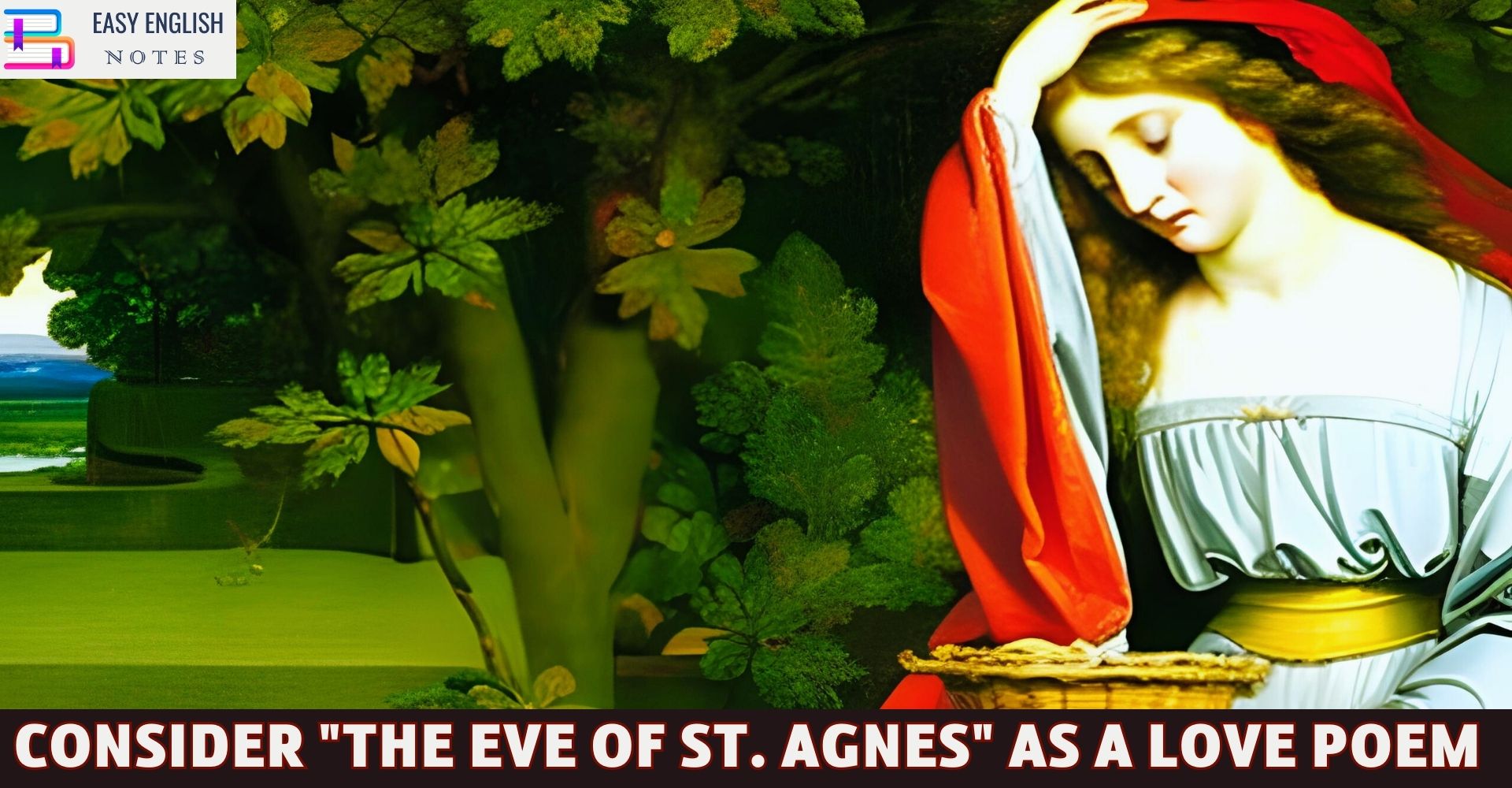John Keats, a prominent figure in English Romantic poetry, is known for his profound exploration of human emotions and experiences. One of his celebrated works, “The Eve of St. Agnes,” is often regarded as a love poem that delves into the themes of passion, romance, and desire. Set against the backdrop of a mystical and enchanting night, the poem weaves a narrative that celebrates the transformative power of love and the yearning for romantic connection.
Characters and Love:
At the heart of “The Eve of St. Agnes” are the central characters, Madeline and Porphyro, who embody the essence of young and ardent love. Madeline’s purity and innocence, symbolized by her virginal attire and religious devotion, provide a stark contrast to Porphyro’s passionate pursuit. Their interactions, ranging from stolen glances to the final embrace, reflect the depth of longing and yearning that characterize romantic love. The tension between Madeline’s devoutness and Porphyro’s ardor creates a captivating dynamic that drives the narrative forward.
Imagery of Passion:
Keats’s poetic brilliance is evident in his use of vivid and sensual imagery to enhance the poem’s romantic theme. Through his descriptions, the reader is transported to a world suffused with passion and enchantment. Madeline’s chamber, adorned with “silken, hush’d, and chaste” decorations, and the moonlit landscapes, are painted with such detail that they evoke an atmosphere of heightened emotions. The rich tapestries, soft lighting, and warm textures of the environment create an intimate setting that serves to intensify the emotional and physical connections between the characters.
Sensuous Descriptions:
Sensuous details play a significant role in conveying the depth of emotion between Madeline and Porphyro. The tactile descriptions, such as the mention of “deep-damask’d crimson” and the “rosy sanctuary” of the chamber, engage the reader’s senses, allowing them to feel the physicality of the environment. These descriptions not only immerse the reader in the scene but also evoke the sensuality and passion of the characters’ emotions. The use of tactile sensations effectively bridges the gap between the readers and the characters, fostering a more profound emotional resonance.
Symbolism of Love:
Within “The Eve of St. Agnes,” various elements carry symbolic significance that contributes to the exploration of love. The mystical atmosphere of St. Agnes Eve serves as a fitting backdrop for the unfolding love story, adding an aura of enchantment and magic. The choice of St. Agnes, a patron saint of virgins and martyrs, infuses the theme of love with religious connotations, further underscoring the depth of emotion. The act of Porphyro hiding among Madeline’s garments and emerging to reveal himself can be seen as a metaphor for the unveiling of hidden emotions and desires that love often brings to the surface.
Themes of Yearning and Anticipation:
“Yearning” and “anticipation” are central themes that resonate throughout the poem. The depiction of Madeline’s longing for Porphyro and the anticipation of their meeting on this enchanted night contribute to the emotional intensity of the narrative. Keats skillfully captures the emotional state of characters on the precipice of love, allowing the readers to experience the powerful emotions that arise from the expectation of romantic connection. Through the exploration of these themes, the poem portrays the human condition of desiring love and the emotions that come with it.
Also Read :
- Compare Hamlet with Macbeth, Othello and other Tragedies
- “The Pardoner’s Tale” is the finest tale of Chaucer
- Prologue to Canterbury Tales – (Short Ques & Ans)
- Confessional Poetry – Definition & meaning
Romantic and Erotic Undertones:
While “The Eve of St. Agnes” is undoubtedly a celebration of love, it also contains romantic and at times erotic undertones. Keats’s choice of words and imagery, especially in the scenes involving Madeline’s undressing and the passionate gaze exchanged between the characters, creates an atmosphere of intimacy and allure. These elements contribute to the overall sensuousness of the poem and highlight the physical and emotional dimensions of romantic relationships. Keats delicately navigates the line between the sensual and the romantic, adding layers of depth to the poem’s portrayal of love.
Climactic Embrace:
The climactic moment of the poem, where Madeline and Porphyro finally embrace, symbolizes the culmination of their emotional and romantic journey. This moment of union represents the transformative power of love. As Madeline and Porphyro come together in an intimate and passionate embrace, they transcend societal norms and conventions, encapsulating the essence of their deep emotions. This culmination not only signifies the fulfillment of their desires but also the transcendence of the ordinary into the extraordinary realm of love.
The Influence of Romanticism:
The poem’s treatment of love aligns with the broader themes of Romanticism, a literary movement that emphasized emotion, individuality, and the sublime. “The Eve of St. Agnes” encapsulates the Romantic ideal of celebrating intense emotions and exploring the depths of human experience. The themes of passion and romance are a quintessential manifestation of the Romantic spirit, and Keats employs them to engage with readers on a profound emotional level.
Conclusion:
In “The Eve of St. Agnes,” John Keats masterfully explores the intricacies of passion and romance, crafting a love poem that resonates with readers across time. Through the characters of Madeline and Porphyro, the rich imagery, the sensuous descriptions, and the themes of yearning and anticipation, the poem encapsulates the transformative power of love. Keats’s ability to weave a narrative that captures the emotional intensity and complexities of love is a testament to his poetic genius. “The Eve of St. Agnes” remains a timeless work that invites readers to immerse themselves in the world of romance, passion, and the profound human longing for connection and intimacy.
PLEASE HELP ME TO REACH 1000 SUBSCRIBER ON MY COOKING YT CHANNEL (CLICK HERE)











